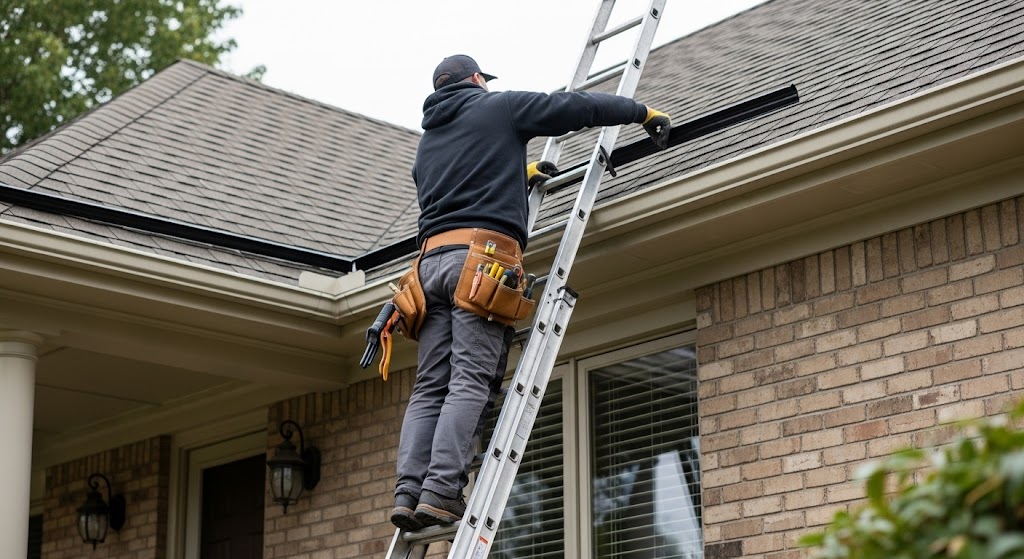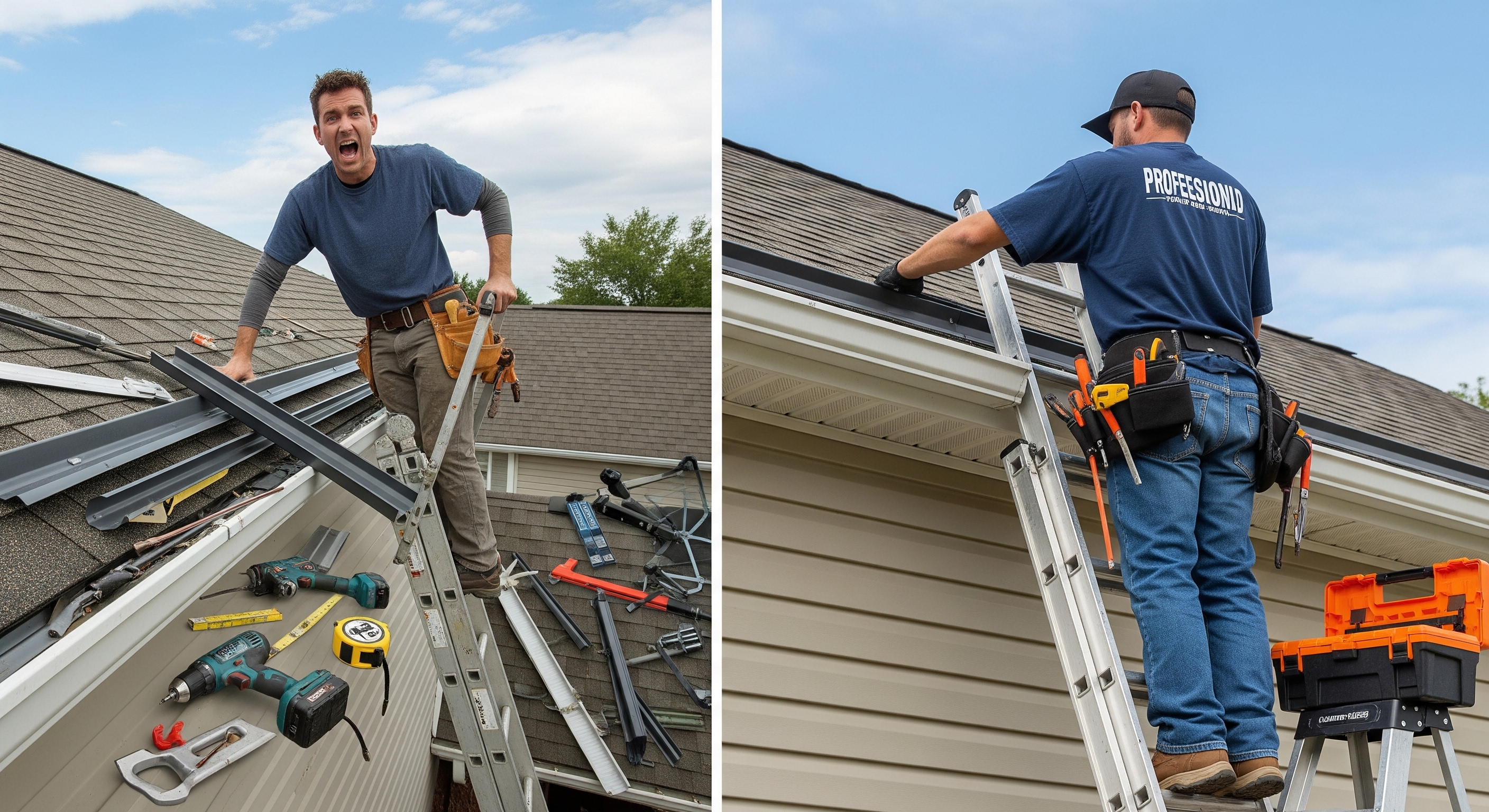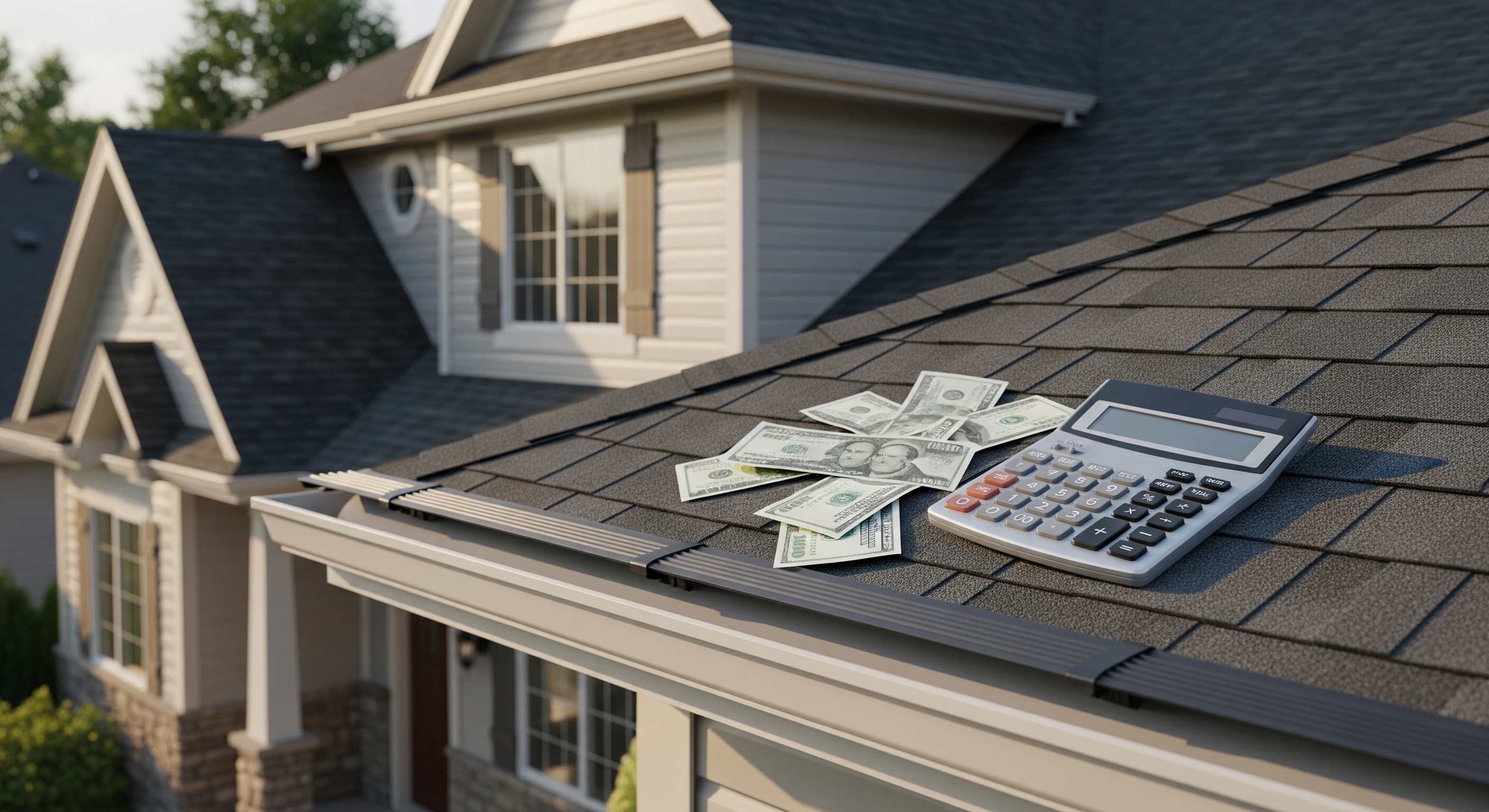
7 Signs You Need Gutter Guards Installed Before the Next Rainy Season

Gutter guard installation can transform a homeowner’s rainy season routine by preventing clogs, molds, and foundation damage. When rainwater management becomes a chore rather than a convenience, it’s often a clue that proactive measures are overdue. Debris buildup, from leaves to pine needles, accelerates corrosion and leaks in unprotected gutters. By recognizing early warning signs, homeowners can save on costly repairs and preserve curb appeal.
How Can Homeowners Spot Warning Signs Before the Next Downpour?
Spotting issues early is crucial to maintaining a healthy gutter system. Minor leaks or small drips might seem insignificant but often precede larger failures. Observing roofline edges after a heavy storm can reveal hidden problems such as water stains or moss growth. A proactive inspection routine helps ensure that any necessary gutter protection installation happens well before the first hard rain.
1. Water Overflow and Pooling on the Roofline
When gutters overflow at multiple points along the roofline, rainwater often spills onto siding or accumulates near the foundation. This overflow indicates that the channel is no longer directing water efficiently. Standing water can compromise downspout performance and lead to basement flooding or soil erosion in landscaping. Promptly addressing this sign prevents water from seeping beneath siding or undermining your home’s structural base.
2. Sagging or Separated Gutters
Visible sagging or sections pulling away from fascia boards point to sustained stress from water and debris weight. Sagging troughs often result from loose fasteners or compromised brackets that can no longer support gutters full of leaves and grime. Left unaddressed, these weak points expand and allow water seepage behind the gutter line, rotting fascia and soffits. A comprehensive Gutter Guard Installation can add support and reduce routine stress on the system.
3. Frequent Pest Infestations
Gutters clogged with leaf litter and stagnant water become breeding grounds for mosquitoes, ants, and other pests. Birds and rodents may also nest in overflowed troughs, exacerbating blockages and corrosion. These unwanted guests create health risks and can damage roofing materials when they nest near the eaves. Installing a reliable gutter guard system installation deters pests by keeping debris out and water flowing smoothly.
4. Rust Formation and Paint Peeling
Rust spots along the gutter edge and peeling paint are red flags signaling metal degradation. Rust occurs when protective coatings wear thin, allowing moisture to oxidize the metal beneath. Flaking paint accelerates corrosion and indicates that standing water or debris is persisting longer than it should. Choosing the best gutter guard installation can shield metal parts from direct contact with debris and reduce moisture retention.
5. Visible Cracks, Holes, and Leaks
Small cracks or pinholes may seem harmless until heavy rain exploits these weak points, creating significant leaks. Water jets from cracks can erode masonry, stain brickwork, and jeopardize window and door thresholds. Addressing these punctures early with sealants can work as a short-term fix, but a full guard system installation offers a long-lasting solution. Proactive replacement of compromised sections ensures uninterrupted water diversion.
6. Rotting Fascia and Soffits
When fascia boards show dark stains, blistering wood, or mold growth, it’s often due to consistent overflow from an inefficient gutter system. Water that spills over the top edge of gutters runs down to fascia and soffits, soaking wooden components and causing rot. Fascia rot compromises the roof edge and invites pests into the attic space. Upgrading to a high-quality gutter guard protects these vulnerable areas and extends roofline integrity.
7. Persistent Cleaning Efforts Despite Maintenance
If routine gutter cleaning every season barely improves flow, it’s a strong sign that debris accumulation is too frequent and heavy. Laborious scooping, flushing, and rinsing become wasteful when the same blockages reappear after the next storm. Efficient guards minimize maintenance cycles by stopping leaves and pine needles before they enter the trough. Investing in a proven gutter guard system installation lets homeowners reclaim weekends without worrying about ladders and muck.
Which Gutter Guard System Installation Options Suit Different Homes?
Every home has unique needs based on roof pitch, surrounding trees, and weather patterns. Evaluating system types helps align performance expectations with budget parameters. From snap-on micro mesh to foam inserts, each option balances protection, maintenance ease, and upfront cost. Consulting manufacturer specifications alongside real-world reviews ensures a tailored solution for rainwater management challenges.
Mesh Screen Systems
Mesh screens use fine-grit aluminum or stainless steel panels that cover the gutter opening. Rainwater passes through the perforations, while leaves, seeds, and other debris rest on top. Winds eventually blow the trapped material away, keeping the screens largely self-clearing. This leaf protection method is popular for homes surrounded by deciduous trees and requires minimal intervention.
Reverse Curve Covers
Reverse curve designs channel water along a curved hood, forcing it into the gutter while guiding debris over the front edge. They excel in handling heavy rainfall but can struggle with lightweight organic matter like pine needles. Proper installation angle and roof edge attachment are critical for effective performance. Reverse curve guards offer robust protection where prolonged downpours are common.
Foam and Brush Inserts
Foam inserts fit directly inside the gutter channel, providing a barrier that stops large debris while still allowing water to seep through. Brush systems use stiff bristles to block twigs and leaves. Both are budget-friendly solutions but can require occasional maintenance to remove trapped organic material. For homeowners prioritizing simplicity over aesthetics, these options deliver straightforward debris prevention.
How Much Does Gutter Guard Installation Cost?
Homeowners often compare upfront investment against long-term savings when budgeting for gutter protection. Understanding gutter guards cost varies by system type, material grade, and labor rates in a given region. Basic foam inserts may start under $1 per linear foot, while premium stainless steel mesh installations can exceed $8 per linear foot. Factoring in warranties, expected lifespan, and potential maintenance drives a true cost-benefit analysis.
When Should Gutter Guard Installation Be Scheduled?
Timing installation just before the rainy season ensures maximum protection when downpours begin. Late summer or early fall installations catch leaves before they start shedding in earnest. Clearing existing debris prior to guard placement is vital to ensure a clean foundation for secure attachment. For homeowners juggling multiple projects, this window also typically aligns with off-peak scheduling for contractors.
In regions prone to seasonal storms, advance scheduling avoids long wait times and premium urgent fees. By planning installations at least four to six weeks before significant rainfall, the system settles properly and contractors can address any unforeseen issues. Those seeking professional assistance can always Contact Us to reserve installation slots ahead of peak demand.
Introduction to Professional vs. DIY Gutter Guard Installation
Deciding between a self-install and hiring experts hinges on skill level, ladder safety, and confidence with power tools. Many homeowners enjoy the cost savings of a DIY approach for straightforward snap-on systems. Others prefer the security of manufacturer-backed warranties that often require certified installer credentials. Weighing professional Gutter Guard Installation vs. DIY factors in price, guarantee coverage, and workmanship peace of mind.
Inexperienced installers risk improper attachment or damage to roof shingles when prying up fascia and trim. Conversely, pros bring specialized equipment, detailed knowledge of local weather challenges, and often handle permits or HOA requirements. Homeowners should evaluate their comfort level with heights and technical tasks before choosing a route to protect gutters against debris and corrosion.
Maintenance Tips to Extend the Life of Gutter Guards
Routine inspection twice a year keeps gutter guards performing at peak efficiency. Even the best systems can accumulate dust, small seeds, or granule fragments from asphalt shingles. A gentle spray from a garden hose usually clears fine particles without loosening attachments. Checking fasteners and sealant beads helps catch minor issues before they develop into leaks or sagging sections.
Trimming overhanging branches and managing nearby foliage reduces organic debris before it ever reaches the guard surface. Maintaining proper gutter slope toward downspouts ensures rapid water flow and minimizes pooling. For expert guidance on long-term performance, homeowners can refer to our About US page and discover best practices refined over a decade of service.
Conclusion
Gutter guard installation is more than a convenience—it’s an investment in home longevity, preventing water damage, pest intrusion, and structural decay. By recognizing signs like overflowing troughs, sagging channels, and persistent cleaning cycles, homeowners can act before the rainy season wreaks havoc. Evaluating system types, weighing costs, and choosing the right installation timing ensures that rainwater management remains efficient year after year. For reliable, professional service with a decade of expertise, trust Home Defender USA to deliver tailored gutter guard solutions that stand up to every storm.
Frequently Asked Questions
Can gutter guards completely eliminate the need for gutter cleaning?
While gutter guards greatly reduce the volume of leaves and debris entering the channels, they don’t render cleaning obsolete. Small particles, granule dust, and airborne sediment can still accumulate. Biannual checks and occasional rinsing ensure optimal functionality and prevent unexpected blockages.
Do gutter guard installations work effectively in heavy rainfall?
Yes. High-quality mesh screens and reverse curve covers are engineered to handle intense downpours by allowing water to rapidly enter the gutter while diverting most debris. Proper slope and secure fastening are key to preventing overflow during extreme weather.
What are the typical warranty periods for gutter guard systems?
Warranty lengths vary by manufacturer and installer certification. Standard coverage often ranges from 5 to 25 years, covering failures in materials and workmanship. Homeowners should verify that warranty conditions include installation by certified professionals to ensure full protection.
Can gutter guards prevent ice dams during winter months?
Some systems with low-profile design reduce snow accumulation by encouraging water to flow through before freezing. However, specialized heated cable installations or ice-shedding roofing materials work best for freezing conditions. Combining gutter guards with proper insulation and attic ventilation offers comprehensive ice dam mitigation.
How long does a professional gutter guard installation usually take?
A typical single-story home with 200 linear feet of gutters takes one full day for certified technicians to complete installation, including cleanup and final inspection. Multi-story homes or intricate rooflines may require an additional day to ensure safety and meticulous attachment.














.jpg)











